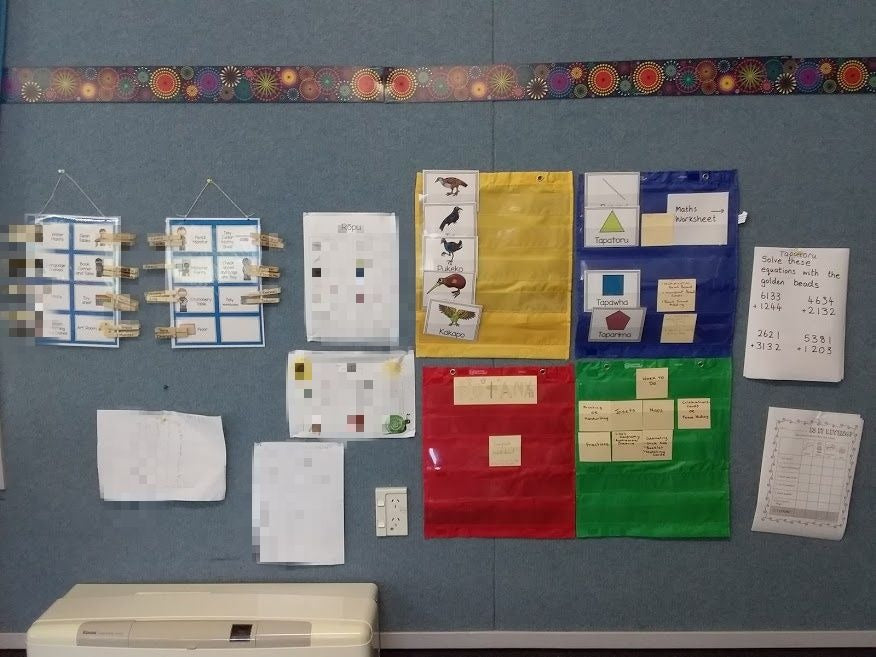
How the children in my class know about their follow up work
Share
I thought I would give you a glimpse into how students in my class know what follow up work they have to or could do.
When I first came into the class there was a system where the teacher set some 'must do' works for the day and all the children had to complete them.
In Term 1 (Jan-April) of this year I adapted the previous system and had my very young children and those who needed extra support have a tick chart which was kept in one place and the children ticked off what they had done when they had done it.
The other children used a work plan and wrote onto it what work they were going to complete and when including any 'must do' works.
This Term (which we have just started) I have adapted the follow up work. I am trying to have the children be more independent in their work day.
My young children and children who need a lot of support have individual work plans which are laminated and placed on the wall within my eyeline. The children use a whiteboard marker/dry erase pen to write the order of works they are going to do.
I have some neurodiverse children who also have a different kind of laminated sheet and these children order their day so they have one 'hard' work and then an 'easy' work. This is similar to a brain break.
My third group is where the bulk of my children are, I put some required works up for them to do such as 'maths' however this term instead of me saying 'practice the bead frame' I have written up their maths/reading groups and other things I have taught recently and children look there to see what they could do.
My fourth group are my totally normalised children they know to look at the follow up work board and independently plan their own day without me having to check in with them each morning.

This is a picture of our routines/jobs and follow up work.
On the far left are the students jobs (blue paper). Children have a peg with their name on it which I then change each week.
Next to the jobs are the children's reading and maths groups. I work in a co-teaching situation so the groups also tell the students which teacher takes them for their group. On the left side of the paper are the reading groups. On the right side of the paper are the maths groups. I do not consistently teach in 'groups' however this helps students know where to look on the follow-up work to see follow up work choices that may be applicable to them.
On the big yellow pocket chart are the reading groups.
On the blue pocket chart are the maths groups. On the cards I have put down some things the students have recently had lessons on to remind them some things they could practice. As I have a large number of neurodiverse students this is really helpful as a prompt.
On the red sheet are follow up works for Botany. This term my students could opt in to either having a botany focus or a geography focus. I have planned some botany activities and my Teaching Assistant is taking this group. The other group are focusing on cultural geography with me. I will also put my follow up work on this red pocket chart
In the green pocket chart are lessons I have given recently that could be possible work choices for children or things to do. Here is a close up on the pocket charts:

Interested in Montessori Curriculum resource blog posts? Find them here
You can join my mailing list to get more Montessori resources, notifications of new products and news here
1 comment
This is fantastic! Can you share any details on your follow up work ideas, like a list or something? If not, this post definitely will help me. I have a lot of neuro-diverse students too. Thank you for sharing!!!
-Kelly Nastasi
kellyrbmh@gmail.com